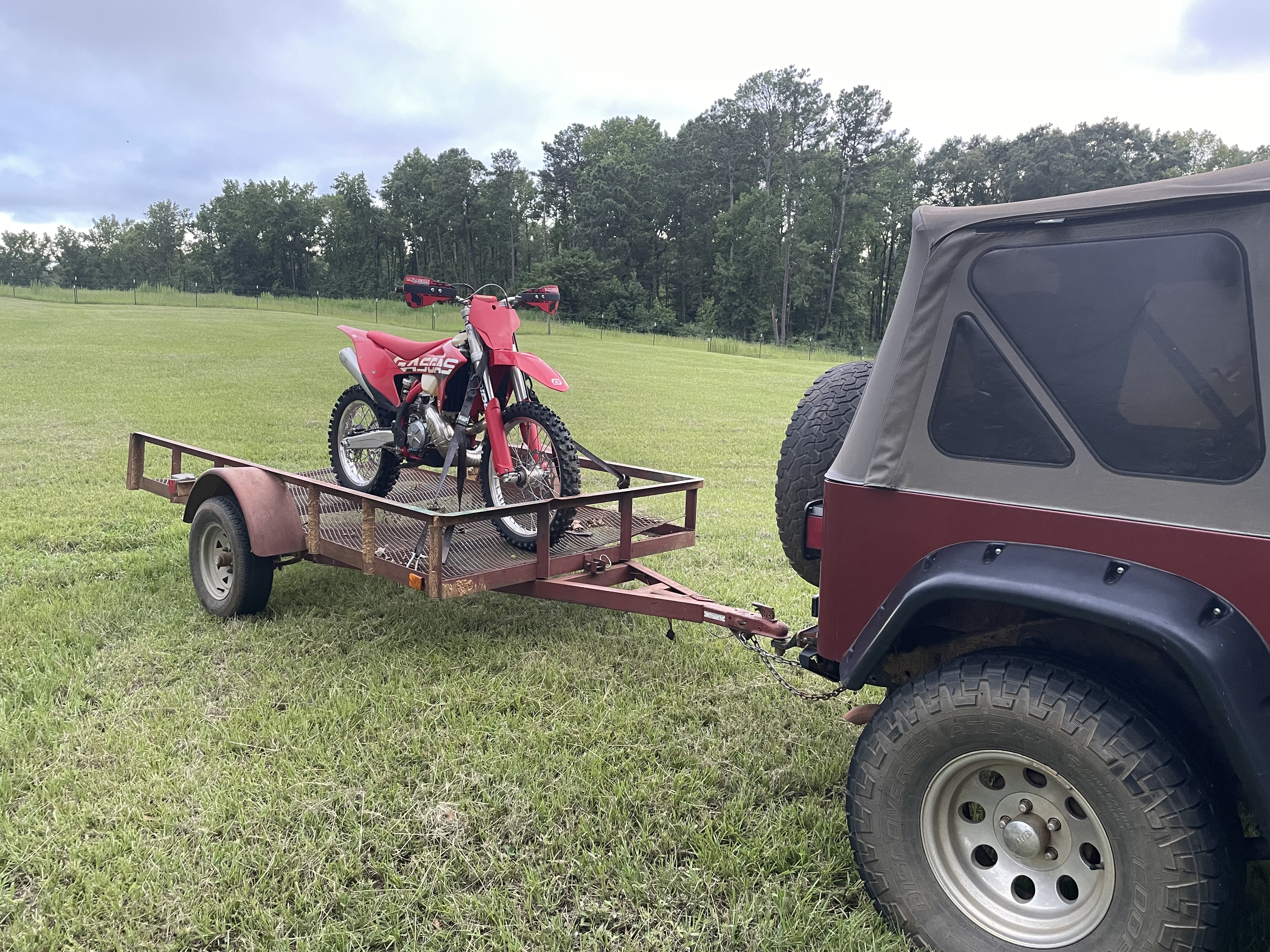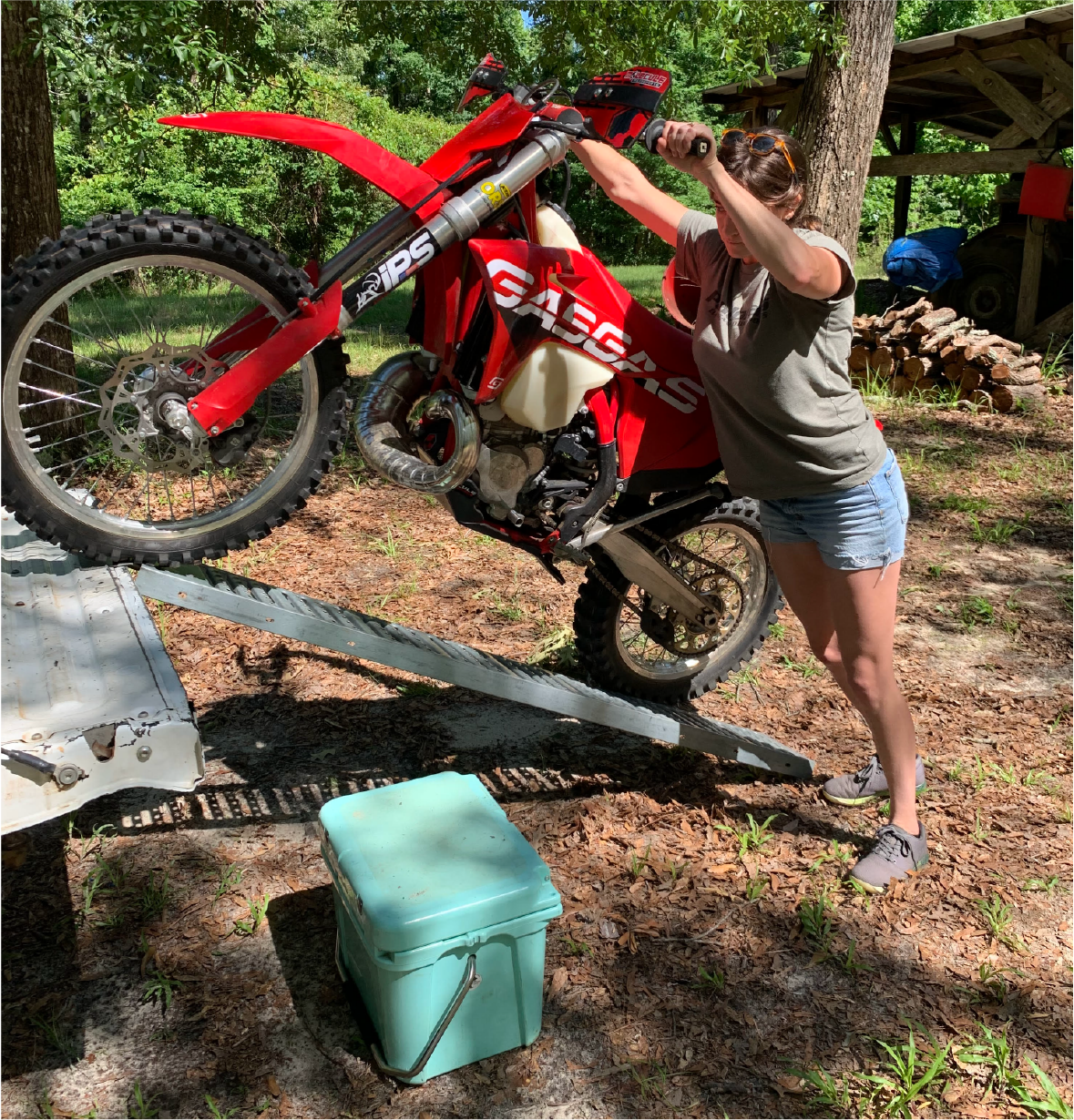Getting Started in Dirt Biking

Dirt biking draws riders from all walks of life.
Photo by Andrew Wheat Photography.
Interested in dirt biking but not sure where to start? Let us help you dive into the adventure for yourself.
We're going to cover:
1. What you need, and what it will cost.
2. Where you can ride and who you can ride with.
Let's begin with the most important thing: money.
Here's a list of everything you’re going to need, and what it will
cost.
1. A bike: $2,000-$10,000
2. Riding gear: $400-$1,500
3. Bike transportation: $300-$3,000
4. Tools: $150-$1,000
5. Good riding buddies: priceless!
TOTAL: $2,800 - $15,000
Acquiring used gear and deals on bikes from friends or family can lower the entry cost, but the reality is that dirt biking isn't cheap. Nothing good is, right?
Buying a Bike
Why Buy Used?
The first and most obvious reason to buy used is your budget. At the low end, a used, running dirt bike can be had for around $2,000 (USD), but it won’t be the best looking or highest performing specimen on the planet, and the odds are high that it will need mechanical work now or in the near future.
However, even if your budget is not limited, buying used for your first bike can be a wise move. Like cars, new dirt bikes depreciate rapidly. As a new rider, you may not know exactly what type of bike is going to be right for you, and it’s wise to start with a moderately priced machine that you won’t lose money on if (when) you decide to try something different. Furthermore, it’s common for new riders to progress quickly, and you may find that you are ready for a faster or higher performance bike within a year or so. Consider your first bike as a starting point, and keep in mind that you might upgrade before too long.
Unlike cars, dirt bikes don’t have a “magic mileage” after which the maintenance needs make them too expensive to own, and they really can’t be “totalled” unless they catch on fire and end up as a pile of molten metal. Dirt bikes are meant to be ridden hard and then fixed, and virtually everything on them is replaceable. Keep in mind, though, that a full engine rebuild can cost upwards of $2,000 if you have to pay a shop (closer to $1,000 if you can do the work yourself). Buying a bike that has a solid maintenance history will lessen the odds of it needing a surprise rebuild, but the possibility always exists (even with practically new bikes!), and many riders learn to wrench on their own machines to keep costs down.
Why Buy New?
New bikes in 2024 are running in the $7,000-10,000+ range. If you think that’s insane, you’re not alone.
There are undeniable benefits of starting with a brand new bike, though. You have greater assurance of problem-free riding—at least for a while—and being free to ride instead of wrench is especially important while you’re developing your riding skills (seat time is king).
Furthermore, a new bike has a good baseline setting: factory suspension settings, a normal-ish handlebar bend, factory-fresh brake and clutch action, and new tires. Having a bike that works as intended allows you to focus on your riding skills rather than on fighting equipment that is working against you, increasing the rate at which you can develop as a rider.
Financing opportunities do exist and can leave with you payments of less than $200/month. If buying new is important to you, and you are willing to “pay to play,” financing can be a good option.
But I Saw a Brand New Bike for $1,499 on a Sketchy Website
Yes, we know. There’s been a recent surge of Chinese "pit bikes" (the largest models tend to be sub-full size) hitting the market, and some of them are turning out to be pretty decent. The general opinion is that these budget machines are not as well-made as the traditional offerings from Japanese and European manufacturers, and they will not last as long or hold up to abuse as well. If you are looking for a play bike to ride around the yard, they can be a suitable option. But for any serious trail riding or racing, stick with the proven brands.
What Type of Bike Should I Buy?
This question is as complicated and nuanced as they come, so we created a custom quiz to help inform your decision.
The first thing to decide is what type of riding you want to do. Our Guide to Dirt Biking Disciplines outlines the various types of riding you can partake in and what types of bikes are best suited to each.
Once you’ve decided what type of riding interests you and what class of bikes is best for it (e.g. trail bikes, motocross bikes, enduro bikes), it’s time to decide what bike characteristics you desire. These generally include:
• Two-stroke or four-stroke
• Electric or kick start
• Engine size (power)
• Carbureted or fuel-injected
Two-strokes and four-strokes have different characteristics, and most model classes offer options of each type.
A couple of decades ago, two-strokes were used in everything from professional motocross to casual trail riding, but ever-tightening emissions restrictions and a focus on four-stroke R&D have seen four-stroke bikes slowly displace two-strokes in professional racing across the board (except in very technical offroad riding where speeds are slow, and the two-stroke’s resistance to stalling and overheating has left it as the preferred option).
Typically, four-strokes have smoother power than their two-stroke brethren and are best for beginners. Four-strokes have more engine mass higher up, so they can feel heavier and less nimble on tight trails, but they are stable and planted at speed. Two-strokes rev fast and have quick power delivery that is best suited to an intermediate or better rider, but the fun factor offered by a zippy "2T" (French...or something..for two-stroke) is simply exhilarating.
Riding Gear
There’s a motorcycling acronym “ATGATT” that stands for “All the Gear, All the Time.” Follow it.You will fall off your bike. It’s just a part of riding. You will also catch your toes in ruts or on rocks, get mud in your eyes, and take branches to the knuckles. All of these things hurt less when you’re wearing proper gear.
When setting your budget for getting into dirt biking, be sure to include some room for buying proper safety gear. This includes:
1. Helmet

There’s another saying that goes, “If you have a $10 head, buy a $10 helmet.” Helmets run from about $100 up into the $700+ range. Over about $450, the safety differences become minimal—the extra dollars get you nice features like more ventilation and higher grade hardware. Buy the best you can get, but remember: if a helmet takes a big hit, you should retire it and buy a new one. (There can be invisible structural damage that will make the lid fail to perform in the next crash.) Buy a helmet you are willing to replace.
2. Boots

Riding boots are the second most critical piece of safety equipment you can wear. Between the pegs and the ground, your feet and ankles can take a beating. Dirt bike boots feature hard TPU plastic to shield you from impacts and are designed to be stiff to prevent injuries from flexion. At first, dirt bike boots are going to feel enormously uncomfortable. Over time, though, you’ll grow to feel awkward without them.
3. Knee guards/braces

Just like your feet, your knees are going to take impacts. Good knee guards are imperative. Some riders opt for knee braces, which support your knees to prevent injuries to the tendons in your knee from jolts or overextension. Opinions on the effectiveness of knee braces are mixed; one school of thought suggests that knee braces concentrate force on your shin and thigh and trade soft tissue damage for bone factures. They also somewhat restrict movement. Some riders swear by them, though, and won’t ride without them. Do some research on this topic and decide what’s more important to you.
4. Chest protector

Until you take a handlebar to the chest or land flat on you back on hardpack, you won’t appreciate a chest protector. They can be hot in the summer and somewhat restrict your movement, but we highly recommend them.
5. Riding gear

The riding gear itself isn’t as critical as the above pieces of gear, but it is undoubtedly more ergonomic and harder-wearing than jeans. Also, it looks cool. Isn’t looking like a bada** half the fun of dirt biking?
6. Gloves

They’re cheap, they protect your hands, and they improve your grip on the bars.
7. Goggles

Goggles help to protect against roost (dirt flung up by the rear tire) from riders ahead of you, as well as against branches and bugs out on the trail. Getting smacked in the eyeball by a branch hurts—trust us.
8. Neck brace

This is another piece of safety gear that enjoys a mixture of opinions. Data on the effectiveness of neck braces is inconclusive, and some riders say the limited mobility increases your chances of a crash. Once again, we recommend doing some extra research on this.
Bike Transportation
So, you’ve found a bike. Great! Now you have to get it home.There are three primary ways of transporting a dirt bike:
1. In a truck bed.

2. On a utility trailer.

3. On a hitch rack.

If you have a truck, all you need is a loading ramp and some tie-downs to secure the bike with. Getting a dirt bike into and out of a truck bed alone can be a bit intimidating; if you’re going to be hauling alone, using a trailer or a hitch rack may give you more confidence.

Loading and unloading a dirt bike solo can be intimidating at first. Choose a hauling method that is manageable for you; don't let loading the bike be the scariest part of your day!
If you don’t have a truck, you’ll need a car with a trailer hitch to make options 2 or 3 possible. Hitch racks are cheaper than trailers and are a great option if you weren’t counting on buying and storing an entire utility trailer for your dirt bike experiment. Of course, a bike falling over on a trailer is less of a problem than a bike falling off a hitch rack, so do your homework and make sure you’re strapping your bike down correctly.
Regardless of which hauling method you're using, invest in a set of soft-loop straps. The soft loop protects the bike, and the hook prevents the strap from coming off when your bike’s suspension moves as you slam into potholes. It happens.

